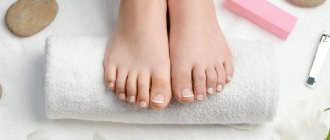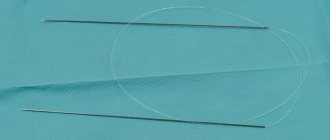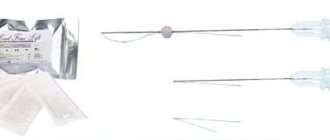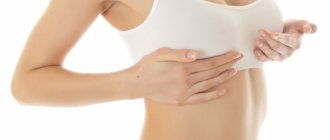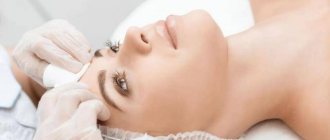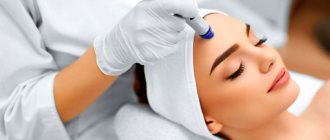Women are ready to do a lot for the sake of beauty, some even go on the operating table, risking life and health. Breast augmentation is becoming an increasingly popular procedure, despite the obvious risks: the presence of a foreign body inside cannot go unnoticed by the body. There are alternative methods for restoring or changing the shape of the breast, and we will talk about one of them in the material - this is a thread lift.
Thread lifting - the essence of the procedure
You should not compare a thread lift with plastic surgery and place high hopes on it. Thread lifting has a number of contraindications and is not suitable for every girl.
A breast lift with thread is not aimed at enlarging the breasts, but at correcting the shape and returning the former firmness. The non-surgical method is indicated only for those girls who have sizes 1-3 and have bust ptosis. Special threads are introduced into the mammary glands, which, in addition to supporting the breasts, activate the production of collagen and elastin, and then dissolve without leaving a trace.
How is a lift performed?
The procedure is a minimally invasive intervention, performed on an outpatient basis under local anesthesia or intravenous anesthesia. The algorithm is as follows:
- the specialist evaluates the size of the work, the number of threads, determines which ones to prefer;
- markings are made on the skin to clarify the location of punctures and the introduction of material;
- the surface is treated with an antiseptic, after which the doctor uses a needle or cannula with an attached thread to insert it according to the pattern to a depth of 3 - 5 mm;
- all strips of material are brought out and secured in the collarbone area, creating a frame for the chest;
- Once all the threads are placed, cold is applied to the injection sites.
To learn how a breast lift is performed using Aptos Body threads, watch this video:
Why do breasts sag?
Breasts can become deformed for various reasons. Women's breasts are sensitive to weight gain and loss, and rapid weight loss can cause sagging and sagging skin. Hormonal surges, pregnancy and lactation, age-related changes, and improper installation of implants can lead to loss of elasticity and tone.
Correction of breast contours becomes not so much a matter of aesthetics, but rather an intervention prescribed by a doctor: breast ptosis can lead to serious inflammatory processes in the mammary glands, osteochondrosis and curvature of the spine.
The main advantage of thread lifting is that there is no surgical intervention during the cosmetic procedure.
Why do breasts sag?
Result and consequences
Breast lift with threads is a non-surgical, safe procedure. But even with this, there is a risk of developing negative consequences, for example:
- insufficient breast lifting effect
- visibility of threads through the skin;
- break ;
- development of inflammatory processes.
The doctor cannot foresee negative aspects in advance. Therefore, the patient needs to be prepared for the fact that the likelihood of their development, although small, is there.
Contraindications to thread lifting
- Breast size is larger than third.
- There are keloid scars or prerequisites for their formation.
- Worsened breast ptosis.
- Serious blood diseases and infections.
- Presence of cancerous tumors.
- Diabetes of both types.
- Pregnancy, breastfeeding.
- Individual intolerance to components in medical threads and allergic reactions.
Before deciding to have a breast lift, you need to sensibly assess all the risks, study contraindications and consult with a competent specialist. Start with your attending physician - he has all the information about your diseases and the condition of the body as a whole.
Contraindications to thread lifting
Contraindications
There are some restrictions when a breast lift with threads is not performed, or the timing of its implementation will be shifted:
- the patient has viral or infectious diseases in the acute stage (possible after recovery);
- localization of foci of inflammation at the site of exposure (the procedure is allowed to be carried out after a course of treatment and relief of inflammation);
- there are diagnosed oncological pathologies (lifting is impossible at any stage of the disease, which is due to excessive exhaustion of the body);
- poor clotting (if the condition is caused by taking medications, then lifting can be performed a week after completing the medication).
What types of threads are there for breast lifting?
A thread lift is the drawing of special threads along the contours of the breast, which, depending on the type, can dissolve, create a frame, or trigger the production of substances necessary for the elasticity of the mammary glands. What types of threads are there?
- Aptos are domestically produced threads, which are divided into two types: AptosExcellenceBody and AptosNeedle.
- AptosExcellenceBody is based on lactic acid and dissolves some time after injection. They are suitable for a bust no larger than size 2, which for some reason has lost its shape.
- AptosNeedle are made from dissolvable polypropylene. They are injected deep into the subcutaneous fat of the breast.
- Resorblift produces lactic acid and does not require removal. The threads are not rejected by the body, do not provoke acute allergic conditions, and additionally synthesize elastin for ligaments and skin.
- SilhouetteliftSoft. Polylactic acid threads. An important difference is the ability to form cones as they dissolve, becoming overgrown with subcutaneous connective tissue. The effect allows you to effectively tighten your breasts with bust asymmetry and sagging mammary glands.
- Mesothreads are polydioxanone threads with polyglycolic acid. They are introduced for preventive purposes, as a preventive measure for sagging and deformation of the glands, skin and nipple.
- Threads with a gold or platinum component. A strong breast frame is created from insoluble threads, which ensures that the breast remains firm for a long time.
Types of threads for breast lift
It is not so much the breast itself that is stretched and deformed, but rather the skin—the “case” for the mammary gland. Thread lifting tightens and strengthens the dermis, creating a kind of supportive bra for it. In the practice of cosmetology clinics, several types of thread lifting are successfully used, each of which has its own characteristics.
Mesothreads
The contours of the breast are well restored and sagging skin on it is eliminated with the help of mesothreads - a fairly widely used lifting procedure.
Mesothread is a very thin and long two-layer cylinder. The thread shell consists of polyglycolic acid, and polydioxanone is placed inside. Thanks to the properties of this main active ingredient, breast tightening occurs.
Mesothreads can be located both inside needles and in special cannulas, through which they are inserted under the skin. Mesothreads are produced not only in different lengths and widths, but also differ in the texture of the thread itself, which comes in the following types:
- smooth,
- spiral,
- with notches.
Dissolving into the breast tissue after about four months, the smooth thread leaves behind a natural support from the produced collagen - the effect can last for two years. The lifting result using spiral threads is achieved due to the fact that when installed, this micro-spring compresses and immediately tightens the skin - and with it the breasts. Spikes on threads with notches can be either unidirectional or multidirectional - this is the most effective type of mesothread, which is most often used for breast lift.
The technique is good not only for its long-term convincing effect, but also for its relative ease of implementation and uncomplicated rehabilitation period.
Video: what is mesothread
Aptos threads
This is a domestic innovative development, which is already widely used with good results for non-surgical plastic surgery of female breasts.
A thin flexible rod with micro-notches along its entire length is what Aptos threads are. When opened, the notches reliably fix the position of the thread in the tissues of the mammary gland, thus maintaining its shape. There are three main types: Aptos Light Lift Body, Aptos Excellence Body and Aptos Needle.
Aptos Light Lift Body is interesting primarily because its constituent polylactic acid, entering the tissues, promotes the active production of collagen and elastin in them. These threads dissolve over time, and the natural framework formed in their place continues to maintain the shape of the mammary gland. Aptos Excellence Body and Aptos Needle are made from high-quality polypropylenes that are not rejected by the body. These two types of Aptos do not dissolve and are used for correction of large breasts.
The procedure occurs quickly enough that it does not require general anesthesia or a long hospital stay. Slight ptosis (drooping) of the breast is an indication for this type of lifting. Positive changes as a result of a thread lift are noticeable almost immediately. There are no stitches or scars left after Aptos. The risk of complications with this technology is minimal.
Video: Aptos thread lifting
Golden threads
Until recently, face and body lifting with gold threads was a fairly popular procedure - among those, of course, who could afford it. But their demand has recently decreased significantly, and not only because of the high cost of the procedure, but also because other types of thread lifting have proven to be more effective and safe.
Gold thread is not just a beautiful advertising image, it actually consists of the purest gold of a very high 999 standard. Each such thread is 24 carats of the noblest of metals. The thinnest gold thread is wound on a conductor thread consisting of polylactic acid - it dissolves over time, and the gold remains to work in the tissues.
The material is absolutely non-allergic and is perfectly accepted by the body without causing rejection. Blood supply improves, metabolic and restoration processes accelerate, as a result of which aging slows down. But the technology also has certain disadvantages:
- the procedure is quite traumatic,
- the result is only supportive, without a lifting effect,
- It is forbidden to perform hardware cosmetology procedures, including laser ones,
- the range of possibilities for further breast correction is limited,
- high price.
Video: breast lift without surgery
Resorblift threads
French-made Resorblift threads are used for lifting and rejuvenating breast skin. These completely self-absorbable reinforcing threads consist of polylactic acid, the benefits of which for the renewal of breast tissue are undeniable.
When the thread dissolves, lactic acid remains in its place - a natural stimulator of metabolism, as well as the body’s production of elastin and collagen. Thus, Resorblift does not have a purely mechanical supporting effect, but also produces a beneficial revitalizing effect on tissue. The quality of this type of thread is very high; they contain only purified polylactic acid without impurities, which guarantees absolute acceptance of the procedure by the body.
Pros of thread lift
- There is no need for general anesthesia: local anesthesia is used for pain relief, and the patient observes the actions of the doctors.
- The recovery period is short and does not involve hospital stay.
- The process does not use scalpels, there are no incisions left on the skin, which means there will be no scars.
- The thread is inserted through a tiny puncture, which is easily tightened.
- There is no foreign object in the patient’s body, as is the case with implants.
- After administration, blood circulation in the breast tissue increases, lactic acid accelerates metabolic processes in cells.
Features of the thread breast lift method
The female breast is an organ consisting of mammary glands, the space between which is filled with connective and fatty tissue.
Since in a young woman this organ consists mainly of glandular tissue, the breasts are quite elastic. In the case when a woman's bust is too soft, this indicates a large amount of fat in it. Since there are no muscles in the chest, no amount of exercise can change its shape. But in addition to glandular, connective and adipose tissue, the entire chest is permeated with Cooper’s ligaments, which form its flexible frame. As a result of various reasons, over time, a structural change occurs in the tissues of this organ and its ligaments, together with the soft tissues of the skin, gradually begin to stretch and sag downwards. All this leads to stretch marks appearing on the chest, it droops and loses its former attractiveness and shape.
There are a large number of reasons that influence these processes occurring with the female breast:
- Pregnancy and lactation.
- Rapid weight gain and then weight loss.
- Hormonal imbalance.
- Changes due to age.
A breast lift with threads will help you avoid all these troubles and complications, which in most cases turns out to be an effective procedure.
Thread lifting or lifting is a modern method of aesthetic correction of soft tissues using special threads that are introduced along certain trajectories in the subcutaneous tissue. Thanks to the selected degree of tension of the threads, it is possible to move the tissues to the desired position, give them a more elastic shape and create a frame to prevent even further sagging of the breasts, as well as slow down age-related changes.
When threads are implanted into the bust, the woman’s body tries to isolate the foreign body by forming a layer of connective tissue (fibrous capsule). Thanks to this process, the breast lift effect occurs.
Cost of correction
The price of lifting performed using threads is more than 95 thousand rubles. Typically, the procedure will require 4 to 8 threads per gland.
Indications for the technique
Main indications for a facelift:
- Relieving patients of ptosis (drooping of the mammary gland) is used for women who have completely preserved the volume of glandular tissue and only a slight smoothing of the gland is noticeable, which manifests itself above the nipple area.
- Prevention of mastoptosis - used after mastopexy (surgical breast lift) and to reduce the volume of the gland.
- The need for slight adjustment of the bust shape.
- Women have contraindications for surgical treatment, as well as fear of acquiring scars after plastic surgery.
Breast lift with threads is designed to correct the shape of the bust, as it helps to firm it up and lift it so that it looks attractive. An additional point is that this procedure, simultaneously with the main goals, slightly increases the volume of the breast by an average of one size.
Most of the patients are women aged 25-50 years. For more mature ladies, the feasibility of the procedure is considered on an individual basis.
Lifting contraindications
Despite its popularity, thread breast lift has some contraindications:
- A woman has a large bust (more than 2).
- Pregnancy and feeding the baby.
- Possible development of allergies to medications.
- Acute infectious disease.
- Features of the menstrual cycle.
- The course of diabetes mellitus.
- Cancerous tumors that are actively developing in the body.
- Impaired blood clotting.
- Significant sagging of the glands.
- Viral, fungal or bacterial diseases of the skin.
- Inflammatory process on the skin or subcutaneous tissue.
Benefits of the procedure
The main advantages of thread lifting include:
- No anesthesia is required - the process takes place under local anesthesia and the patient can observe the actions of the doctors.
- Short recovery period.
- There are no scars - there is no need to make incisions on the skin, and punctures are made to place the threads.
- The absence of large foreign bodies in the female body, because the procedure does not involve the introduction of implants or fillers into the breasts.
- Minor trauma to the chest tissue, so healing occurs quickly.
- Improved tissue condition - this is due to the fact that blood flow increases directly near the threads, which leads to improved metabolic processes.
- The cost of the procedure is much less than plastic surgery.
Is it possible to tighten the breast skin with threads for women with a large bust? Doctors say that this is not recommended, which is the main disadvantage of thread lifting. This procedure will be most effective in women with miniature breasts not exceeding size 2.
How much does it cost to have a breast lift?
Thread lifting is not available to everyone, primarily due to health restrictions and the high cost of the service. The final price will depend on which thread the doctor and patient choose: absorbable or insoluble, made from natural, synthetic materials or metallized. Of course, this is not an operation on which you should save: the inserted threads should not cause body rejection and adverse reactions in the form of pain, inflammation and infections.
You can find out the final cost of the procedure on the website of medical clinics or during a personal visit.
Benefits of the procedure
Correcting the position and appearance of the breast with threads has many advantages that are absent in plastic surgery performed for the same purpose:
- the effect of anesthetics on the body is minimal;
- inability to form scars and cicatrices;
- short recovery period;
- almost painless tissue healing due to minimal damage;
- absence of foreign bodies in the body that can cause rejection;
- increased blood supply and rejuvenation of breast tissue and skin in this area of the body;
- relatively affordable price.
How is the recovery after?
In order for the rehabilitation period to go as smoothly and quickly as possible, you need to follow all the specialist’s recommendations.
- For three to five days after lifting, it is forbidden to press or massage the breasts, or use creams, preparations and ointments to relieve swelling and eliminate bruises. Instead, you can apply cold compresses, leaving them on for a quarter of an hour.
- For several days you need to treat the injection sites with antiseptic agents.
- If the doctor has given explicit approval for the use of analgesics, painkillers can be taken.
- For two weeks after thread lifting, it is forbidden to visit the gym, exercise at home, make sudden and quick jerks with your arms, lift them up and other exercises that can disrupt the healing process.
- For two months after the tightening, you cannot go to the bathhouse or sauna, take a bath or swim - a comfortable warm shower without a hard washcloth is recommended.
- For 14 days after the introduction of threads, you need to sleep only on your back.
Following your doctor's recommendations will help you not only feel better, but also maintain the results of the intervention.
How is the recovery after?
How does a lifting session work?
To obtain tightened breasts, it is necessary to comply not only with the conditions of the appointment, but also with the procedure for performing the procedure. To carry it out, polydioxanone is used, which is injected under the skin. On top it is covered with a shell of polyglycolic acid. The substance is placed intradermally using thin needles measuring 4-9 cm. They are made of bendable material that provides elasticity. This completely eliminates the risk of the tool breaking off during operation.
Threads of biomaterial are placed 3-5 mm under the top layer of skin. The administration is carried out in such a way as not to damage the nerve fibers and blood vessels. The procedure itself consists of several stages:
- Marking - the doctor draws lines on the body along which the biomaterial will be introduced.
- Anesthesia - since the procedure is painful, the patient is given a substance intravenously that keeps him in a state of artificial sleep. If there are contraindications to general anesthesia, local anesthesia is performed.
- Treatment - antiseptic solutions are applied to the skin to avoid infection of wounds.
- Introduction of threads - their number varies depending on the condition of the skin, the age of the patient and the nature of the problem, but most often it varies between 4-8 pieces. Once the frame is created, it is secured next to the collarbone, stretching the skin.
- Re-treatment - antiseptics are again applied to the skin so that the wounds are completely sterile.
- At the end of the procedure, the needle entry points are covered with a plaster and cold is applied to them for 30 minutes.
Lifting using this method is a minimally invasive procedure and can therefore be performed on an outpatient basis. If desired, the patient can stay in the clinic under the supervision of specialists for several additional days upon payment of the room and stay.
Can complications arise?
Thread lifts are not surrounded by the same risks as cosmetic surgery. In rare cases, the patient may have a slightly elevated temperature the next day and may experience slight swelling at the puncture sites. If the fever intensifies and lasts for 2 days, you must definitely visit the doctor who performed the operation to prevent disruption of the recovery process.
Complications can arise if the doctor turned out to be incompetent, the girl had health problems, or the injected material was rejected. What could be happening?
- Longitudinal retractions are found between the threads.
- Folds of skin appear near the nipple and on the areola, and the area becomes loose.
- If the threads are inserted close to the dermis, over time they can be visible through the skin.
- Lush breasts with their weight cause cutting of soft tissues due to increased load on the threads.
- Infections can occur due to violation of the procedure for processing and disinfection of puncture sites, medical equipment and devices.
Technique for performing a bust lift using the thread method
Compared to surgery, this technique does not require special preparation. All that is needed is a preliminary consultation, identification of all indications or contraindications for the procedure, examination of the breast and soft tissues. If a woman feels well and has no serious health problems, the doctor selects the type and number of threads.
The breast lift process takes approximately 2 hours - the procedure is carried out in an operating room or treatment room, where it is possible to maintain complete sterility. Most often, a thread bust lift is performed under intravenous anesthesia, less often with local anesthesia, so a woman is not always able to see the entire process. In the place where the threads are tensioned, the skin should be treated with an antiseptic. Based on the location of the frame, on average 4-8 strips are applied to one breast.
Before starting the procedure, the doctor examines the patient and applies a special marking on the bust in the treated area, where the threads will be located. The fiber is introduced using a thin needle, which is inserted into the tissue through a small incision. There the needle is passed along the contour until the next incision, through which it is removed.
To get a tightened effect, the thread is inserted to a shallow depth of 3-5 mm (this is quite enough so that it is not visible). This will also avoid the risk of damage to blood vessels and nerves located near the treated area.
The average length of one thread is 7 cm - it manages to stitch a larger fabric, which will subsequently create excellent conditions for tightening the skin, thanks to the renewal of breast cells.
One breast is stitched with threads in different directions, but often the fiber is located around the circumference of the mammary gland and in the lower part, located next to the nipple.
After removing the needle from the skin, the excess thread is cut off, and then the skin is re-treated with an antiseptic solution. After this, the area of injections and small incisions is sealed with adhesive tape. As the procedure is completed, it is necessary to apply cold to the place where the threads were inserted for half an hour.
Removing threads
If the patient is not satisfied with the result or has complications, the threads can be removed from the breast. Non-absorbable fiber can be removed at any time, while self-absorbable fiber must be removed before the material becomes deformed. Otherwise, when trying to pull them out, small fragments may remain in the breast and begin to contour.
To extract the fiber, a tool is used that is similar in appearance to a hook used for knitting. With its help, the tip of the thread is picked up through a small incision and pulled out. If the materials cannot be palpated or are not visible, the threads can be found using ultrasound.
Rehabilitation period
The main rules of the rehabilitation period:
- In the first couple of days, you should not massage the gland, or smear it with drugs to remove bruises and drugs to get rid of swelling (if they appear).
- Every 2-3 days, the places where the skin was punctured should be treated with an antiseptic.
- If the swelling does not go away, you need to apply cold to the treated area several times a day.
- If necessary, you can take painkillers.
- For 2 weeks after the operation, it is not recommended to lie on your side or the treated chest, play sports, or make sudden movements of the upper limbs. A favorable position for sleeping is on your back.
- You need to give up massage sessions for 2 weeks.
- It is not advisable to carry out thermal procedures for a month - bath, sauna, solarium, body wrap. A woman can only rinse herself with a warm shower (she should not use a bath either).
Since thread lifting is a low-traumatic procedure, special breast care is required only for the first time after the operation. It is advisable for a woman to wear comfortable, supportive underwear.
What do surgeons say about thread lifting?
Despite its prevalence, thread lifting by plastic surgeons is considered an ineffective and insufficient measure for correcting the shape and size of the breast.
Doctors are convinced that this procedure carries certain risks and does not have a clearly predictable result. Thread lifting leaves outlines of threads that are visible through the skin or become noticeable over time.
This procedure is permissible and recommended only if a woman has prerequisites for ptosis - a weakening of the tone of the pectoral muscle and ligaments that hold adipose and glandular tissue.
What surgeons say about thread lifting
Adverse consequences
Discomfort with decreased or increased sensitivity immediately and for several days after the procedure is considered normal. In addition, swelling is observed in the first days. There is no need to panic if bruises appear at the injection site. Such symptoms depend on the characteristics of the skin and go away on their own.
Complications of thread lifting include:
- prolonged swelling and pain (more than 2 weeks);
- displacement, contouring or thread breakage;
- inflammatory processes due to weakened immunity, infection;
- long-term recovery;
- scars at the puncture site;
- retraction, wrinkling and “looseness” of the skin due to thread tension.
Is there any other way to tighten my breasts?
The breasts themselves do not have muscles and ligaments: underneath there are pectoral muscles, but the soft roundness itself is a combination of glands and fatty tissue. Only the collarbone becomes its attachment. Over the years, under the influence of decreased collagen production, weight changes, hormonal changes, feeding a child and banal gravity, the breasts change their shape. Alas, it is impossible to restore its tone with exercises to increase or self-massage. Physical education can help strengthen the pectoral muscles, which will slightly lift the soft part, but it will not be possible to restore the shape. To prevent ptosis, it is necessary not to completely give up wearing a bra (underwear must be chosen correctly, in size, with a good frame of the belt and straps), maintain good posture, and avoid sudden fluctuations in weight.
Answers on questions
Which is better: mesothreads or Aptos threads?
Aptos are made of polypropylene, and mesothreads are made of polydioxanone. The result of using both types of threads is similar: in their place a frame of connective tissue fibers is formed. Only the Aptos series is made in the form of a spring with notches and balls, so they are more firmly fixed in the skin. This prevents the possibility of displacement. Therefore, this product is better suited for women leading an active lifestyle.
At what age is it best to perform the procedure?
Breast lift with mesothreads is not related to age. It is not used until the end of puberty due to the possibility of changes in the shape of the mammary glands and their size under the influence of hormones. But this technique is suitable for both young girls and adult women.
What needs to be done to be able to breastfeed after a mesothread lift?
Since mesothreads dissolve on their own, there is no need to take any action during pregnancy and breastfeeding. All you have to do is tell your doctor that you have had a breast lift procedure in the past so that he can schedule a routine breast examination. This is important for monitoring the condition and position of threads and fabrics.
Is it worth getting a breast lift?
Beauty is a very subjective concept. If you have no internal desire to change anything in yourself, and the desire to correct the shape or size is dictated by external influences, you should not risk your health and undergo a cosmetic or surgical procedure for the sake of standards. You are beautiful because you are natural. And the right to control your body belongs only to you. If you decide to use cosmetology services and have a breast lift, carefully study the information and weigh all the contraindications.
Recovery period
What happens after the procedure:
- For several days it is necessary to treat the puncture sites with antiseptics;
- If necessary, you can use painkillers recommended by your doctor;
- If tissue swelling persists for a long time, on the advice of a doctor, you can apply cold for a certain time;
- For a month you cannot play sports, visit the pool or carry out thermal procedures;
- For a month, it is recommended to wear a supportive bra, selected according to size and not squeezing the breasts;
- During the recovery period, it is very important to follow all the individual recommendations that the doctor gives to each patient.
The results of a facelift are noticeable immediately after the procedure is completed.
The breasts completely take on their new shape after a few months. During this period, collagen and elastin fibers are actively formed, creating a supporting layer of connective tissue. Remember! For each medical intervention, a confirmed qualification of a doctor and a license to conduct this type of activity are required.
